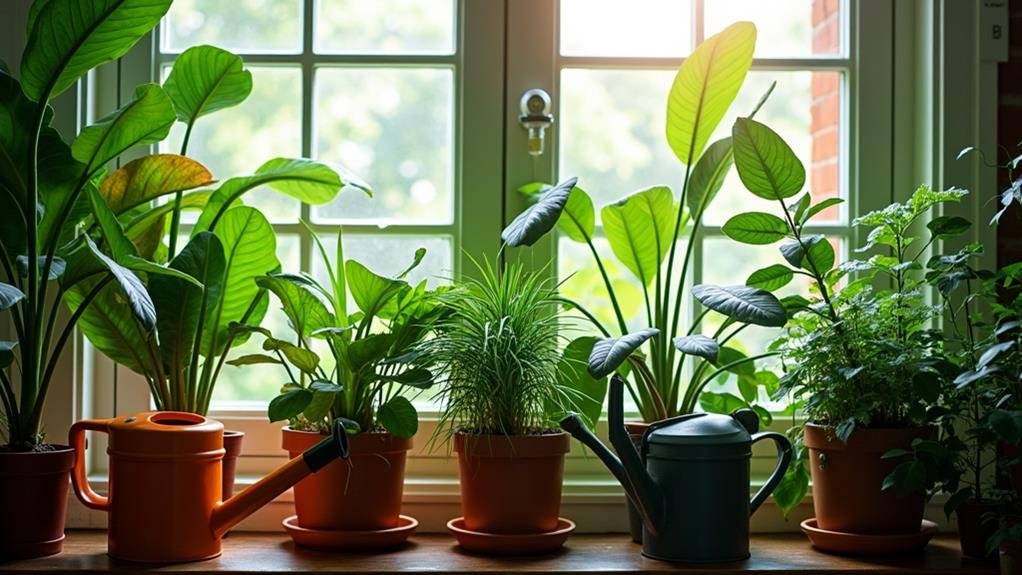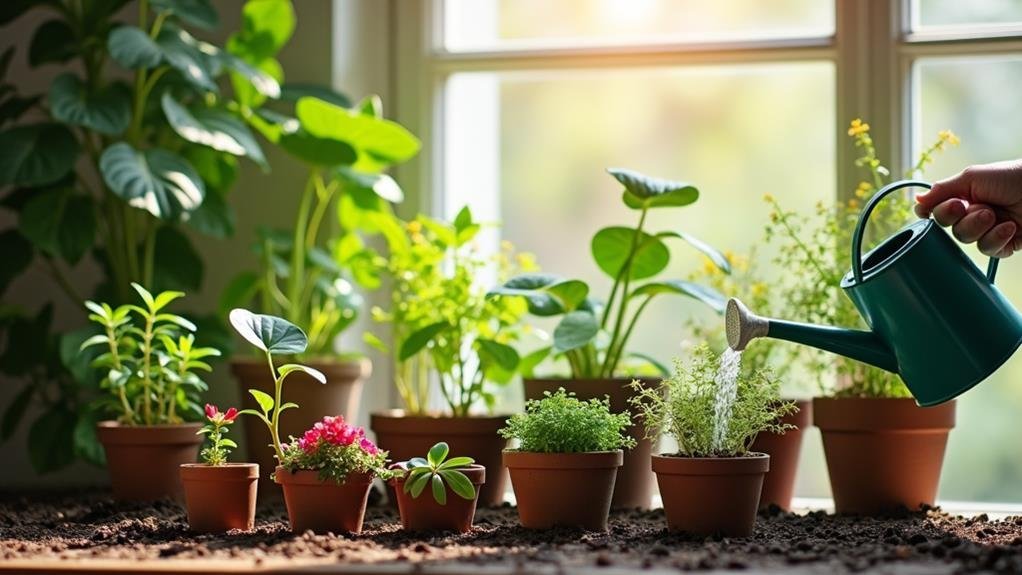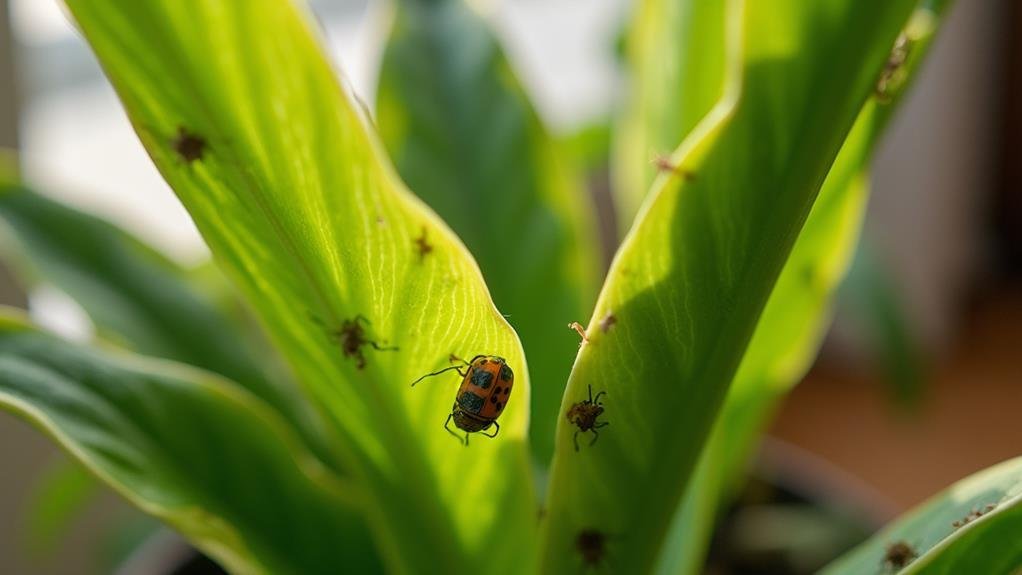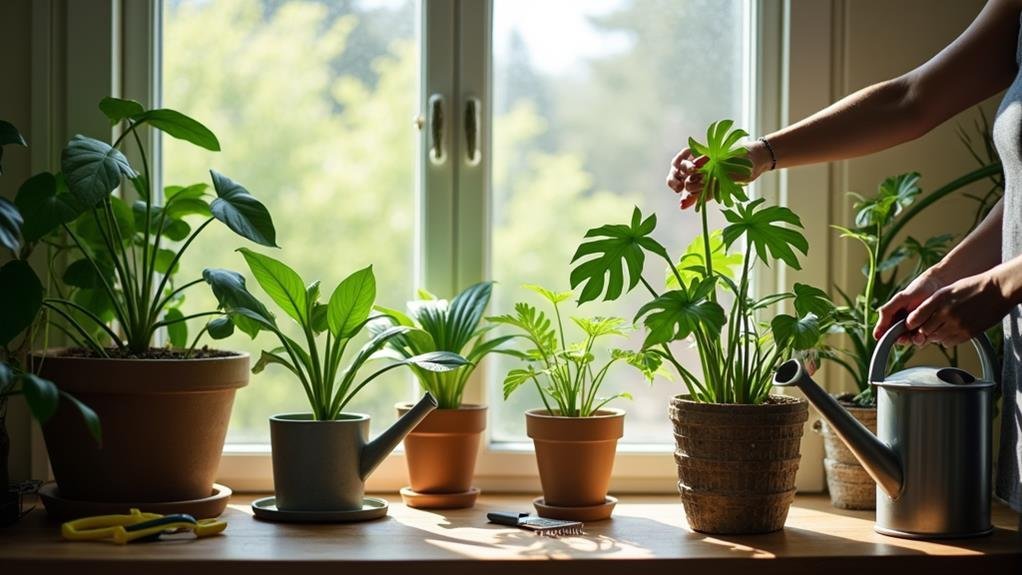When it relates to watering indoor plants, you might think it's as simple as filling a pot and pouring. However, understanding your plant's specific needs is vital for their health. You'll need to take into account factors like soil moisture and the best watering method. By mastering these aspects, you can avoid common pitfalls that lead to over- or underwatering. But before you grab that watering can, let's examine three essential tips that could transform how you care for your plants.
Understand Your Plant's Needs

To truly care for your indoor plants, you need to understand their specific needs. Each plant species has its own unique requirements, including light, humidity, and temperature preferences. Start by identifying the type of plant you have, as this will guide your care routine.
For example, succulents thrive in bright, direct sunlight, while ferns prefer indirect light and higher humidity levels.
Pay attention to your plant's growth patterns and appearance. Yellowing leaves might indicate overwatering, while brown tips could signal underwatering. You'll want to check the soil moisture regularly, as different plants have varying preferences for how dry or wet their soil should be.
Consider the environment in which your plants live, too. If your home has dry air, especially during winter, you might need to provide extra humidity. Grouping plants together can help create a more humid microclimate.
In short, understanding your plant's needs is the foundation for successful indoor gardening. So, take a little time to research and observe, and you'll set yourself up for a thriving indoor garden.
Happy planting!
Choose the Right Watering Method
Understanding your plant's needs sets the stage for choosing the right watering method. You've got a variety of options, and picking the right one can make all the difference.
For most indoor plants, the most common methods include bottom watering, top watering, and using a watering can with a long spout.
Bottom watering involves placing your plant pot in a tray of water and letting it soak up moisture through the drainage holes. This method encourages deep root growth and helps prevent overwatering.
Top watering, on the other hand, is straightforward; just pour water directly onto the soil until it drains from the bottom. It's crucial to guarantee the water reaches the roots evenly.
If you're dealing with delicate plants, consider using a watering can with a long spout, which allows for greater control. You can also use a spray bottle for smaller plants or those with fine leaves, giving them a gentle mist without soaking them.
Ultimately, the right method depends on your plant type and your watering habits. Experiment to find what works best for you and your green friends.
After all, happy plants lead to a happy home!
Monitor Soil Moisture Levels

Monitoring soil moisture levels is essential for keeping your indoor plants healthy and thriving. You can't rely solely on a set watering schedule; plants have different needs based on their variety, pot size, and environmental conditions.
To guarantee your plants get just the right amount of water, check the moisture level in the soil regularly.
One effective method is to stick your finger about an inch into the soil. If it feels dry at that depth, it's time to water. Alternatively, you can use a moisture meter for a more precise reading.
These handy tools can take the guesswork out of watering, providing you with an accurate soil moisture level.
Conclusion
By understanding your plant's specific needs, choosing the right watering method, and regularly monitoring soil moisture levels, you'll keep your indoor plants thriving. Remember, each plant is unique, so adapt your approach based on their requirements. With a little attention and care, you can enjoy lush, healthy greenery in your home. Happy watering, and may your plants flourish like they're on a tropical vacation!




